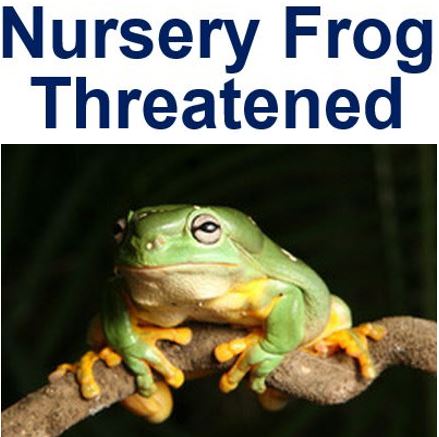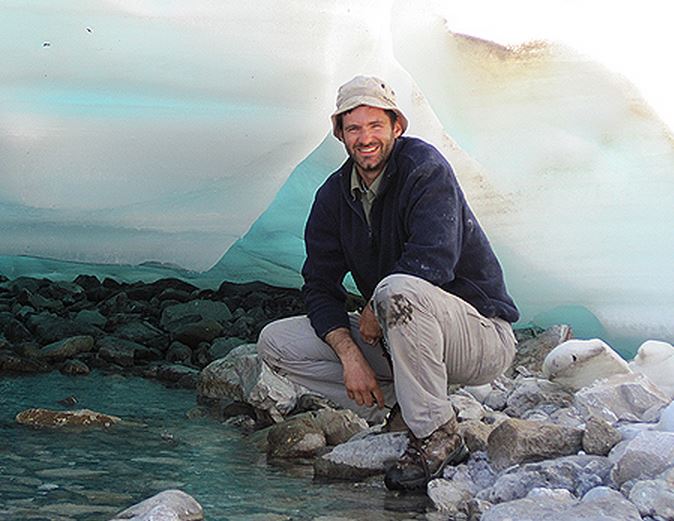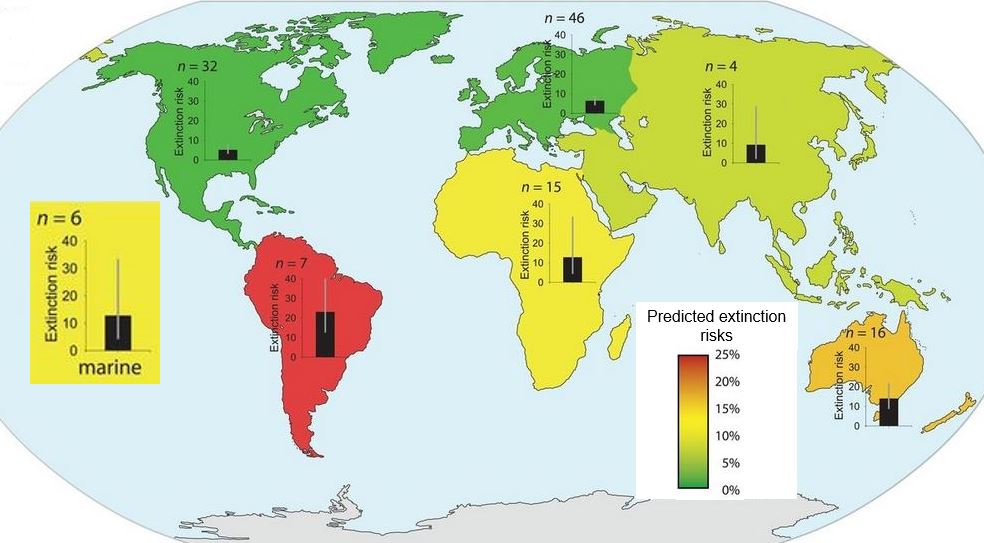One sixth of all species on Earth are under threat of extinction if current climate change policies are not changed. The greatest losses are likely to occur in Australia, South America and New Zealand, says an American scientist.
Mark Urban, associate professor at the Department of Ecology and Evolutionary Biology, University of Connecticut, wrote in the journal Science after crunching the numbers that for every degree that world temperatures rise, more species will vanish.
The risk of species becoming extinct is higher for those continents that have unique climate ranges, hosting native species that are only able to survive on a limited environmental range. Unfortunately, those regions are the least studied.

A nursery frog, threatened with extinction. Amphibians and reptiles are especially vulnerable. (Image: today.uconn.edu)
One sixth of species have a bleak future
Prof. Urban carried out a meta-analysis based on information from previously-published studies. He reported that increases in future global temperatures will threaten up to one in every six species if current climate change policies remain unmodified.
Unlike many previous studies that focused on the survival chances of individual species, Prof. Urban’s is the only one, he claims, to have taken a holistic approach.
Prof. Urban said:
“We can look across all the studies and use the wisdom of many scientists. When we put it all together we can account for the uncertainty in each approach, and look for common patterns and understand how the moderators in each type of study affect outcomes.”
Species extinction rates increase as temperatures rise
Based on current conditions, the study predicts an almost 3% species extinction rate. If our planet warms an additional 3°C, the extinction rate jumps to 8.5%. And if global warming continues on that climbing trajectory, the world would experience an increase in temperature of 4.3°C by the end of this century – which would mean a 16% extinction rate, i.e. one in every six species.
Prof. Urban said he took a global approach with his analysis, because there are inherent difficulties in comparing prior studies by several authors.
Studies differed in significant ways, including geographic regions, species examined, methods and assumptions. Findings were not consistent and difficult to compare across species.

Professor Mark Urban with a sheet of aufeis in Alaska. Aufeis is ice that forms as layers on streams during winter. As the region becomes warmer it is declining. (Photo: courtesy of Mark Urban)
Australian, New Zealand and South American species most threatened
While the majority of studies about the effects of climate change have focused on Europe and North America, the greatest risk for species loss exists in Australasia and South America, he added.
The risks in Australasia and South America are especially troublesome, because those continents have unique climate ranges, and several of their native species have a limited range in which they can thrive.
Some of the native species with more limited ranges, such as reptiles and amphibians, face a 6% higher risk of extinction compared to non-native species that currently live in the same area.
Prof. Urban said:
“With Australia and New Zealand, we’re also looking at land masses that are relatively small and isolated, so that the possibility of a species shifting to a new habitat simply doesn’t exist.”
South America, Australia, and New Zealand have the highest risks (14 to 23%), while the lowest risks are in North America and Europe (5 to 6%). Colors indicate relative risk. Bar graphs with 95% CIs and number of studies (n) are displayed. (Image: Science)
Extinction rates similar across different taxonomic groups
Prof. Urban was surprised to find that extinction risks did not vary significantly according to taxonomic group.
The author said:
“We have generally thought that certain groups were more at risk than others, but our results show that all taxonomic groups will be affected as the climate changes.”
“While all species affected by climate change will not become extinct, there will undoubtedly be unwanted changes to contend with.”
Even species not directly threatened with extinction are likely to see significant declines in population, distribution, and changes in their interaction with other species. This could affect ecosystems, crop yields, and the spread of diseases, the author explained.
Prof. Urban said:
“It’s hard enough to predict change, but in the end, we have one climate to contend with. With living things, we are dealing with millions of species, none of which act precisely the same. In fact, we may be surprised, as indirect biologic risks that are not even recognized at present may turn out to have a greater impact than we’ve ever anticipated.”
Citation: “Accelerating extinction risk from climate change,” Mark C. Urban. Science. Published 1 May, 2015. DOI: 10.1126/science.aaa4984.


